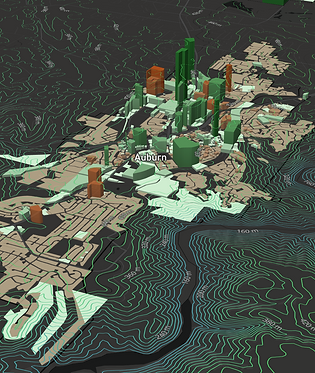
The Sustainability Advisory Committee is entrusted to tackle some of society’s toughest challenges. From climate change to resilience efforts across the City of Auburn, the committee and its partners are working to address how the community will support the next generation of growth while fostering sustainable and equitable communities.
Urban data collection has advanced by leaps and bounds in recent years. Yet, it is more difficult than ever to distill this information into actionable insights to support smart, data-driven problem-solving. Gathering the data necessary to understand existing conditions and future impacts is typically an arduous and time-consuming process. This report presents maps and analyses of Auburn’s existing conditions using the program UrbanFootprint. With thousands of preloaded datasets and built-in analysis modules, UrbanFootprint helps obtain answers to complex planning questions.
One of the first steps of any planning project is a comprehensive assessment of existing conditions. This report presents existing conditions as a series of topical sections including resiliency, sustainability, and impacts of current land use. Each section begins with a description of the analysis, the data sets involved, and instructions on how to interpret the results. The following maps, graphs, and tables for each section are designed to present information at a community-wide scale and show how the data aggregates from the individual person. This method reveals the impact scale of various project opportunities in relation to each other and outlines which parcels in the City of Auburn contribute to that opportunity.


Sustainably Committee’s Role
Commissioned the report from Genevieve Marsh Design Group.

